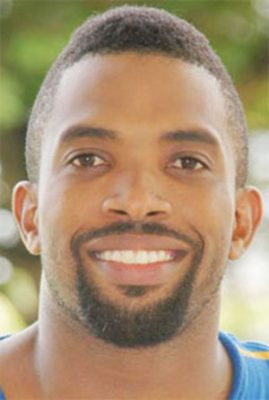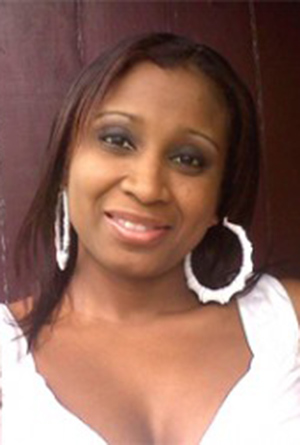
Since its founding in 2012, H&T has been dominant in the Full-Length Plays Category of the National Drama Festival, including an unprecedented record of three consecutive victories. It has consistently produced annual plays, even in a wavering market, satisfying the desire for popular thrillers in the theatre, and in the process has seen the rise of Cadogan-Taylor as a major producer and a foremost theatre director. It can therefore claim a record of achievement.
Then there is Hollingsworth’s consistency as a leading Guyanese dramatist, fulfilling the demand for his plays among a popular audience. These have included the introduction of new work, the production of some of his best work, and the return of some of his most popular plays. Two of his best swept all before them: 83 Million Gees and Watch De Ride 3.

Hollingsworth’s works as a playwright come to life through the efficiency and effectiveness of Cadogan-Taylor as a director. His most popular play and his biggest success to date is Till Ah Find A Place, followed by Watch De Ride (which probably made him the most at the box office). But Till Ah Find A Place is among Guyana’s most popular plays; the one most in demand, and the one with the most re-runs.
The success of that play saw the writing of three sequels. Last week, H&T Theatre Arts Group debuted Till Ah Find a Place 4, the latest in the quartet. They have all been popular, with much audience appeal, but they have not all been of equal strength.
The original play set the standard with its telling topical issue; it was theatre within the genre of social realism. It struck the minefield of topicality with its carpe diem reference to the housing shortage among the working class, lower middle class and the not-so-well-off in Guyana. It fortified that with a great deal of humour – as it was also a local romantic comedy of the popular Restoration type – and a generous menu of sex served with laughter. A topical social issue, plus sex and romance, multiplied by comedy: put that in a mathematical formula and the result is popular appeal and a box office hit.
Till Ah Find A Place 2 drew heavily on this, trading on the success of its predecessor. It complicated the plot considerably, and brought to the fore as the major focus in the sequel to the original drama a Donna Daly, who started off as a provocative, alluring damsel in distress and progressed into a promiscuous, scheming, exploiting femme fatale who concocted mischief and tragic destruction. But the sensational delights were well anchored by a strong current of legal instruction, social warning and useful lessons about domestic matters and the law. Its ending was strong, as it was tragic, in feminist polemics, social realism and irony.
Part 3 introduced another very popular element – that of the supernatural with a subtitle “She’s Back” to appeal to the audience’s thirst for the sensational vengeful spirit. It went for both humour and the pseudo-spiritual with obeah and the havoc wreaked by the returning Donna. Part 4, which is sub-titled “The Final Chapter,” gives the impression that it is to be the last in the quartet and the final sequel in the tempestuous roller-coaster life and exploits of Donna Daly. The playwright thus signaled his intention to “break my staff” and “drown my book” therefore concluding the long tale of “Till Ah Find A Place.” But he also throws in the added subtitle “I hear the daughter more bad than the mother” to ensure the popular audience looking for thrills was kept interested. And after all the previous explosions of sex, sensations, jealousy, vindictiveness, the law, obeah and ghosts, one never expected this tepid ending by deus ex machina that was found in this sequel.
It was the kind of contrived ending in which the playwright brings everything to a

close by just killing off everyone. There were only two interesting parts of the denouement. One was what befell Roxanne Lewis, wife of the protagonist. By all appearances, she was driven mad by the helpers of Singh the obeahman in order to prevent her testifying against him in court. This was quite a creative little sequence in an effective departure from the straight realism of the play, using lighting and half-light and the exquisite performance of Le Tisha Da Silva who played Roxanne. Her sudden moment of mental distraction needed good handling which Da Silva provided. Also complicit in that moment were the spiritual workers – Singh’s assistants Shivina De Mendonca, Keisha Sam, Nalini Nareshwari and Frederick Minty.
The other bit of interest was the observation that in spite of the elaborate ritual to exorcise Donna and expel her back to the beyond, she was able to see off her enemies one by one. She took care of Linden Lewis as the playwright killed off everybody except Donna. Her spirit remained triumphant and seemed the only one left standing at the end. A door left ajar for Part 5, perhaps?
Hollingsworth tried to get the elements of popular appeal to work for him again in this play. These included the supernatural, the roaming spirit invoked by obeah, and the unending humour that accompanies this in the popular theatre. It was the comic version of obeah, not the serious phenomenon. For example, research will inform that the beating out of evil spirits is not a practice in obeah, but rather belongs to revivalist cults and pseudo-spiritualism. (It is not to be confused with flagellation, which is quite something else in ancient religious practice.)
The play resorted to many common techniques. For example, exorcism and the havoc wreaked by the malevolent spirit, which are other crowd-pleasing devices. Those gimmicks were generally effectively and convincingly executed in this production. High sexuality, which is often an ingredient in demonic spirit possession was also exploited. The figure of the self-righteous priest, unable to handle real situations was also there, very well played to form by Sean Thompson, who understood the invocation of laughter by the cowardly man of the cloth taking to flight at the sight of any challenge.
The point is, Hollingsworth was able to write stronger plays in some previous sequels. For example, in Part 2. Part 3 repeated strategies used to good effect in the previous plays, and the plot did not offer anything else that was new.
What worked for this drama was the particular strength of its performance. It was well produced, with contributions from direction (Cadogan-Taylor), make-up (Clemencio Goddette) and stage management (Ladonna Kissoon). And those were fortified by the living dynamism of the acting in even the lesser roles, such as Leon Cummings (not acknowledged in the programme) and Paul Budnah, who played the obeah-man with precise conviction.
The highly talented and versatile Mark Luke Edwards was at work as the long-suffering Linden Lewis. He had to carry the play and did so in a fashion that kept it alive. His range was from humour to deep emotion, which he managed sensitively, but with more success in the domestic home situation than in the prison scenes, which were the play’s narrative frame with fairly ordinary lines and little drama.
Da Silva was outstanding in a straight role. She wisely avoided comic performance in an environment surrounded by comedy and kept her character believable. It was very effective playing opposite Luke-Edwards in explosive moments and changing to care and concern in her relationship with her daughter Samantha.
That part was commanded by Sonia Yarde, who was especially convincing in a memorable exhibition. This was a role which called for serious switches of mood, demeanour and type, all managed seamlessly by Yarde. This part of Samantha’s schizophrenic character was actually the more demanding because of its necessary simplicity and its proximity to the more sensational wildness of the demonic possession.
Yarde created a version of Donna Daly as an invading spirit that was the delight of the audience. The malevolent, the blithe spirit, the sexually aggressive provocateuse, the demanding woman of superhuman strength and the scornful avenger were all in one character. This demonic Donna was a crowd puller and Yarde did not disappoint.
The power of acting by Yarde, Luke-Edwards and Da Silva, in particular, made the play worth going to see. There was a team on stage that took a drama with an unremarkable script that called upon deus ex machina to negotiate an ending, and made it a crowd pleasing, effective production.






